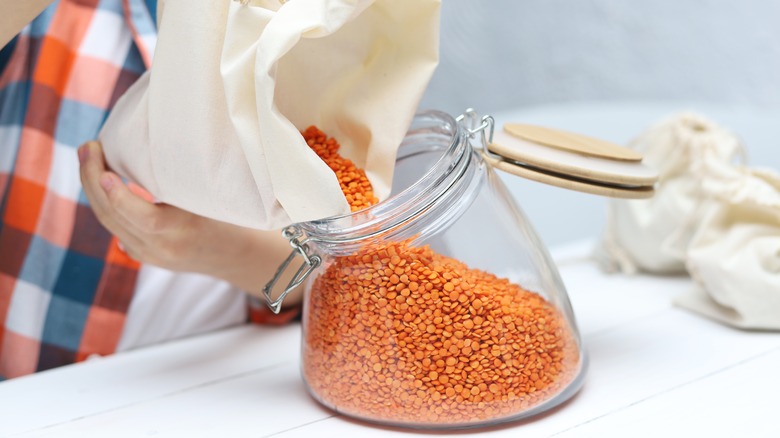Why You Shouldn't Mix New And Old Lentils
Lentils are a staple food, beloved for their slightly earthy and nutty flavor in many cultures and cuisines around the globe. Not only are they found in popular dishes as the base for your favorite soups and stews — most notably dal — but their high protein content makes them a versatile staple in many vegan and vegetarian dishes too. Lentils paired with any whole grain of your choice provide all of the essential amino acids to create a complete protein (via SF Gate).
Besides being protein-rich, lentils provide your body with important nutrients like folate which helps your body regenerate cells, iron, potassium, and both insoluble and soluble fiber that aid in lowering cholesterol (via Harvard Health). As part of the legume family, lentils are just as good for the environment as they are for us. A 2018 study published in the journal "Frontiers in Plant Science" found that, by pairing with nitrogen-producing bacteria found in their roots, lentils and other legumes enrich the soil by converting nitrogen into plant-healthy ammonia.
With all their benefits and uses, lentils are a great staple to keep in your pantry. When stored properly, Does It Go Bad says that lentils can preserve their nutritious benefits and savored taste for two to three years. Their long shelf life means you can keep them around for a long time, but after a certain point, lentils need to be sorted according to their age and should not be mixed.
Watch out for unevenly cooked lentils
Given their long list of health benefits, recipes, and long shelf life, lentils are worthy of hoarding. However, it's important that you date your lentils once you put them away. While they'll still be good to eat, after about a year in storage, lentils will start to become dry and take longer to cook (via Dried Foodie). For this reason, you should not mix your newly bought lentils with your batch of old lentils. If new and old lentils are mixed and cooked together, they will only result in a bowl of unevenly cooked, half firm and half mushy, lentils that will throw off any recipe you're following.
So to save yourself the trouble in the future, make sure you don't pour any new bags of fresh lentils into the container with your old ones. Instead, take the time to label and date them so that you know to keep them separate. This will also help you when it comes time to prepare them, serving as a reminder that your older lentils will take a bit longer, and to check their texture as you go to avoid under-cooking them. This way, no matter how long they've been in your cupboard, you'll end up with a bowl of beautifully and evenly cooked lentils perfect for lentil soup, or any of the many other lentil recipes you're using them for.

